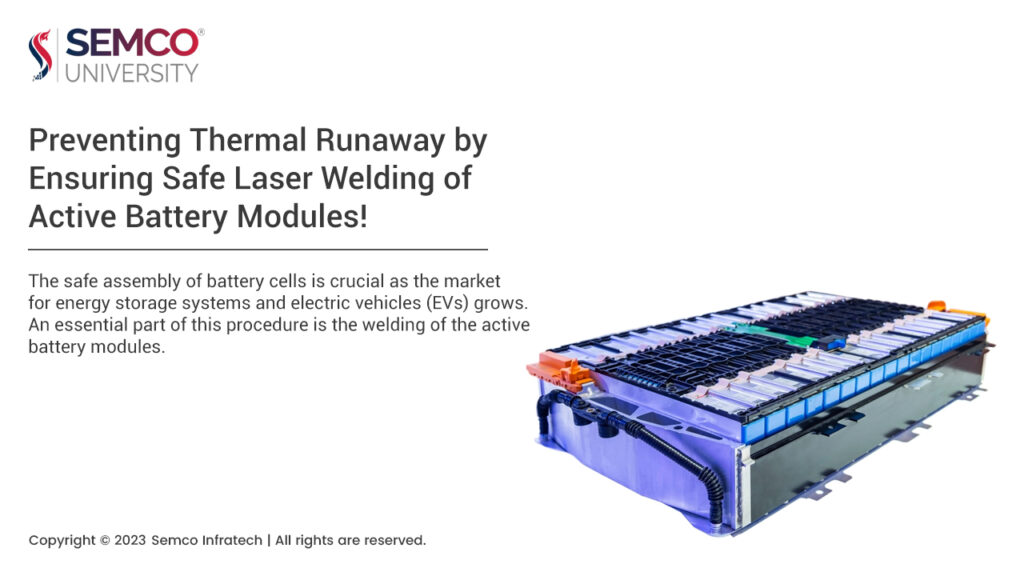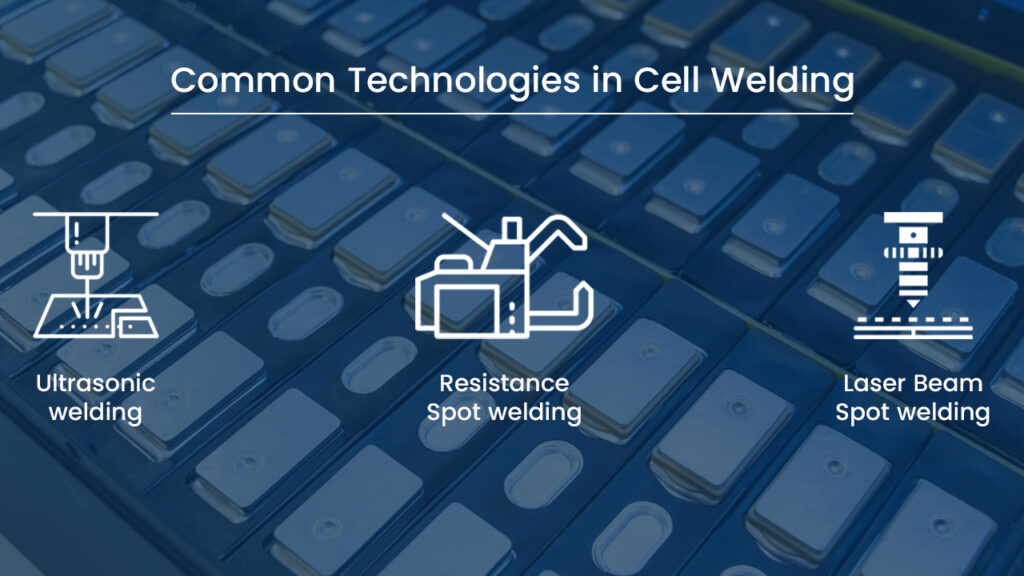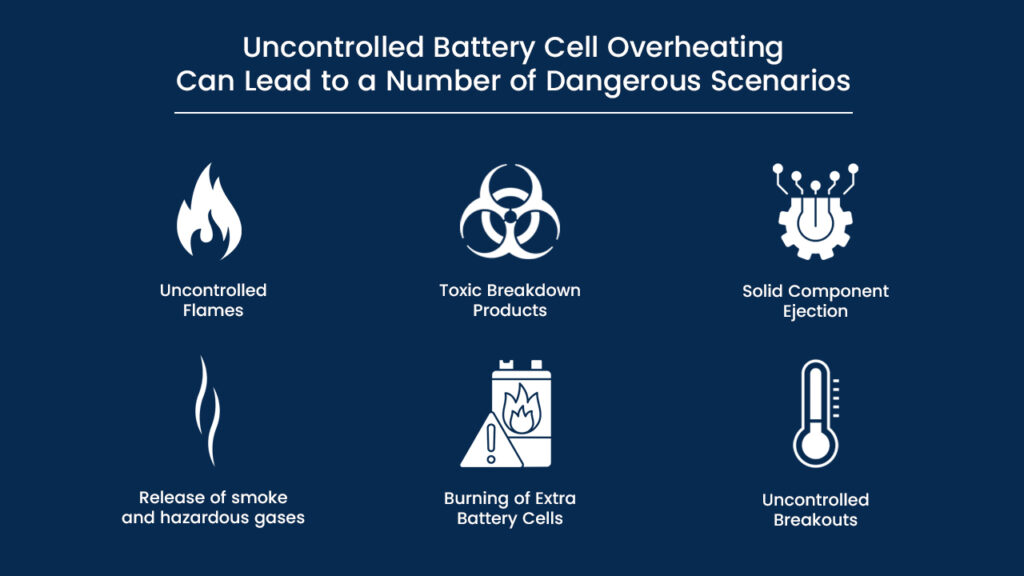
The safe assembly of battery cells is crucial as the market for energy storage systems and electric vehicles (EVs) grows. An essential part of this procedure is the welding of the active battery modules. But when battery cells are welded together, a mistake in the procedure might have disastrous results, such as overheating the cells and raising the possibility of a fire. In order to avoid such unfavorable results, sophisticated safety mechanisms and tools have to be developed in order to stop thermal runaway and protect both the production cells and the plant as a whole. This article will discuss the necessity of safe laser welding of active battery modules as well as the essential safety equipment needed to reduce the hazards.

Common Technologies in Cell Welding
Battery cell joining involves the use of three main technologies:
- Ultrasonic welding
- Resistance spot welding
- Laser beam welding
Out of these, laser beam welding is the most adaptable and accurate technique for fusing battery cells together. It is a well-liked option in the energy storage and automotive industries due to its many benefits, which include minimum distortion, precise control over the weld position, and decreased heat input.
Possible Impacts During Cell Welding
During the process of welding battery cells, several factors may affect the integrity of the cells, which could result in thermal runaway. Electrical conduction, mechanical forces, and thermal conduction are some of these variables. For Safe Laser Welding to avoid overheating and related risks, these parameters must be properly managed.
Uncontrolled battery cell overheating can lead to a number of dangerous scenarios

1. Uncontrolled flames: Cell overheating can result in uncontrollable fires, posing a risk to employee safety as well as the product.
2. Toxic breakdown products: Overheating can emit harmful gases and breakdown products, endangering the health of those who work nearby.
3. Solid component ejection: Harsh reactions inside a battery cell have the potential to eject solid components, which can lead to harm or damage.
4. Release of smoke and hazardous gases: When thermal runaway occurs, the release of smoke and hazardous gases can increase the risk to public safety.
5. Burning of extra battery cells: When a single cell overheats, it might spread to neighboring cells and intensify the situation.
6. Uncontrolled breakouts: Containment and damage management can be difficult in the event of an uncontrolled breakout caused by thermal runaway.
Standards for Safety Equipment
Safety mechanisms are necessary to avert the catastrophic effects of thermal runaway in active battery modules. These gadgets ought to meet a number of important criteria:
- Extinguishing
- Provides the battery cells with a quick cooling effect.
- Cutting off potential nearby fires’ oxygen supply.
- Application
- Simple management for trading in the connecting cell.
- The ability to integrate and retrofit current production systems.
- Dangerous
- Materials and parts gathered as a result of thermal runaway.
- The breakdown of hazardous materials.
- There is no risk to the employees.
Modern Safety Instruments for Different Uses
There are numerous tools and techniques available to handle various facets of battery cell safety, such as:
1. Fire Suppression Top: This top has the ability to suppress flames and is made for cell contact.
2. Oxygen Reduction: Mainly utilized for storage, it lowers the ambient oxygen content to help put out fires.
3. Extinguishing Gas: Designed to quickly put out fires in test benches.
4. Vehicle extinguishing powder: used to put out thermal runaway situations.
Conclusion
Given the growing demand for energy storage systems and electric vehicles, the Safe Laser Welding of active battery cells is essential. Modern safety devices and concepts are required to avoid mishaps and disastrous outcomes like thermal runaway. These tools ought to be safe for workers to use, capable of quickly putting out fires, and adaptable for use in industrial settings. Such safety devices must be developed and put into use in order to guarantee the secure and dependable assembly of battery modules, which will support the expansion of the energy storage and electric mobility sectors.
About Semco – Semco University is an educational website that caters to the needs of students and researchers. Offering information on Lithium-ion batteries. The resources and content are compiled from various sources including manufacturers, test labs, crowdsourcing, etc. Our motto is to provide a viable resource for companies, students, and enthusiasts interested in participating in the Li-ion Battery industry. Our initiative is to make people aware of the benefits, and opportunities of the revolutionary Lithium Batteries for multiple applications.
WhatsApp – Facebook – Instagram – Twitter – LinkedIn – YouTube
